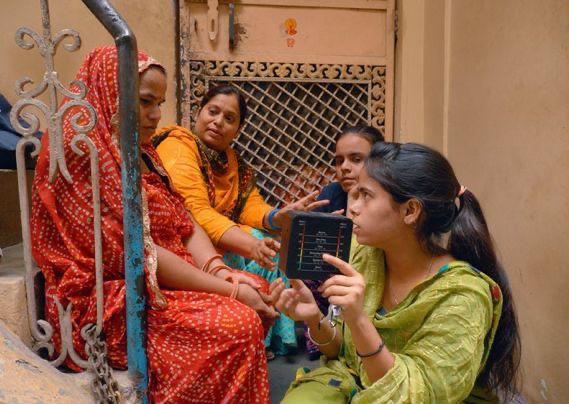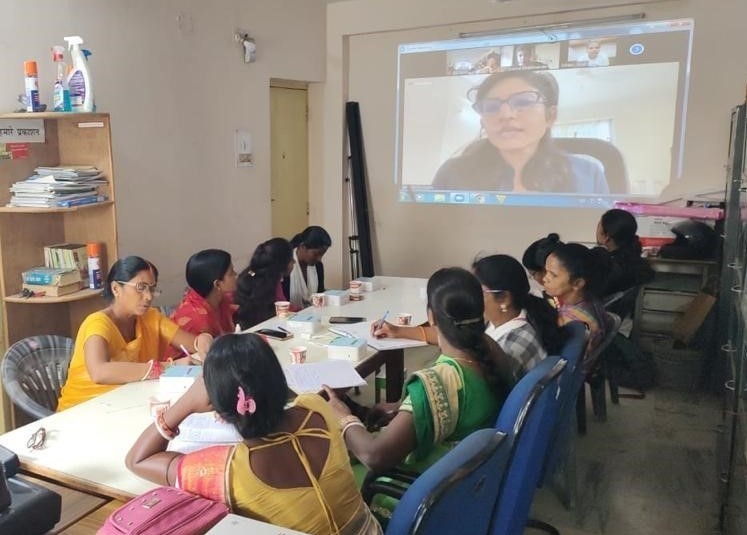The Silent Threat: How Air Pollution Disproportionately Affects Women's Health
Introduction
When we think of public health crises, air pollution rarely gets categorized by gender—yet its effects are far from equal. Women worldwide face disproportionate health consequences from breathing polluted air, with devastating impacts that extend from respiratory illness to reproductive harm. Despite this alarming reality, 92% of the global population breathes air that exceeds World Health Organization (WHO) pollution guidelines, with women bearing an outsized burden of the resulting health problems.
At Airveda, we believe that understanding these gender-specific vulnerabilities is the first step toward protection. Our mission extends beyond simply monitoring air quality—we aim to empower women with the knowledge and tools to safeguard their health in a world where clean air has become increasingly scarce.
The Science Behind Women's Vulnerability to Air Pollution

Biological Factors That Increase Risk
Women's bodies interact with pollutants differently from men's, creating unique vulnerabilities:
- Smaller Lung Capacity, Higher Breathing Rates: Women typically have 20-25% smaller lung volumes than men of similar height but compensate with higher respiratory rates, increasing their exposure to airborne toxins over time.
- Hormonal Interactions: Research published in the Journal of Clinical Endocrinology & Metabolism demonstrates that estrogen can enhance the inflammatory response to pollutants like PM2.5, potentially explaining why women show stronger reactions to the same pollution levels as men.
- Body Composition Differences: Women's bodies typically contain 10-15% more fat tissue than men's, creating larger reservoirs for fat-soluble pollutants. A 2022 study in Environmental Health Perspectives found that certain persistent organic pollutants (POPs) remain detectable in women's bodies up to three times longer than in men's.
Societal Factors Amplifying Exposure
Beyond biology, women's social roles and economic positions further increase their pollution exposure:
- Indoor Air Quality Burden: In many regions, women spend up to 40% more time indoors than men, where pollution from cooking, heating, and household chemicals can reach levels up to 5 times higher than outdoor air, according to WHO data.
- Occupational Exposure: Industries with predominantly female workforces—textile manufacturing, healthcare, beauty services, and domestic work—often involve chronic exposure to airborne chemicals, dust, and particulate matter.
- Research Gap: A comprehensive review in the Lancet found that women remain significantly underrepresented in environmental health research, with only 34% of air pollution studies specifically analyzing gender differences.
The Health Toll: How Air Pollution Attacks Women's Bodies
Respiratory and Cardiovascular Impact
The respiratory and cardiovascular effects of pollution manifest differently in women:
- COPD Gender Paradox: Despite lower smoking rates among women globally, they are 1.5 times more likely than men to develop Chronic Obstructive Pulmonary Disease (COPD) when exposed to the same pollution levels. (Source: Female gender as a risk factor for developing COPD - PMC)
- Asthma Severity: Women with asthma face a 40% higher hospitalization rate than men with the same condition when living in high-pollution areas.
- Hidden Heart Risk: The Women's Health Initiative study, tracking over 65,000 women without previous cardiovascular disease, found that those living in areas with high PM2.5 levels had a 38% higher risk of developing heart disease compared to those in cleaner regions.
- Non-Smoker Lung Cancer: Air pollution accounts for nearly 25% of lung cancer cases in non-smoking women in urban areas with high pollution levels, according to research published in The Lancet Oncology. (Source: Lung cancer diagnoses on the rise among never-smokers worldwide )
The Maternal Health Crisis
Perhaps nowhere is pollution's gender-specific impact more devastating than in maternal and reproductive health:
- Pregnancy Complications:A meta-analysis of 32 studies found that pregnant women exposed to high levels of PM2.5 were 20% more likely to deliver prematurely and have babies with low birth weight.
- Fertility Reduction: Research from the Human Reproduction journal demonstrated a 25% reduction in fertility rates for women living in areas exceeding WHO air quality guidelines.
- Hormonal Disruption: Long-term exposure to air pollution containing endocrine-disrupting chemicals has been linked to an earlier onset of menopause by up to 2 years in highly polluted areas.
- Miscarriage Risk: Data from a cohort study of over 250,000 pregnancies found that spikes in air pollution were associated with a 15-20% increase in miscarriage risk, with the strongest correlation during the first trimester.
Indoor Air: The Pollution That Follows Women Home

The home environment—traditionally considered a woman's domain in many cultures—harbors its dangerous air quality threats:
The Kitchen Killer
In developing regions, 3 billion people rely on solid fuels for cooking and heating, with women performing 90% of cooking duties. The resulting indoor smoke exposure is equivalent to burning 400 cigarettes per hour, contributing to:
- Nearly 2 million premature deaths occur annually, predominantly among women and children
- 50% higher rates of COPD in women who cook with biomass fuels compared to those using cleaner alternatives
- Increased risk of cataracts, the leading cause of blindness in women in developing countries
Hidden Household Hazards
Even in developed regions with cleaner cooking technologies, women face unique indoor exposures:
- Household Chemicals: Women use an average of 12 personal care products daily, containing up to 168 different chemical ingredients, many of which become airborne during use.
- Cleaning Products:Studies show that regular use of conventional cleaning products can reduce lung function equivalent to smoking 20 cigarettes daily, with women performing over 70% of household cleaning globally.
Global Perspectives: Air Pollution's Impact on Women Across Regions
The relationship between women and air pollution varies dramatically across the globe:
| Region | Primary Exposure Source | Most Affected Women | Local Initiatives |
|---|---|---|---|
| South Asia | Cooking with biomass fuels | Rural homemakers | Clean cookstove programs |
| East Asia | Industrial & vehicle emissions | Urban workers & mothers | Community monitoring networks |
| Africa | Agricultural burning & dust | Rural farmers & market vendors | Women-led conservation efforts |
| Latin America | Urban traffic & waste burning | Low-income community residents | “Mujeres por Aire Limpio” (Women for Clean Air) |
| North America | Chemical facilities & traffic | Minority communities | Environmental justice movements |
| Europe | Vehicle emissions & heating | Urban residents | Women in Green politics |
Empowering Women Against Air Pollution: The Airveda Solution

Knowledge and monitoring represent the first line of defense against pollution's gender-specific threats. Airveda offers women tools to take control of their environmental health:
Comprehensive Monitoring Technology
Our Airveda Air Quality Monitors detect both the obvious and hidden threats women face:
- High-Precision PM2.5 and PM10 Sensors:Track the invisible particles that pose the greatest threat to respiratory and cardiovascular health
- Indoor and Outdoor Models:Address the complete spectrum of women's exposure patterns
- Real-Time Alerts: Provide timely warnings when pollution levels become dangerous, especially for pregnant women and those with existing conditions
Practical Protection Strategies
Women can take immediate steps to reduce their exposure:
- Create Clean Air Zones: Use Airveda monitors to identify the safest areas in your home and workplace, then use HEPA air purifiers strategically in these spaces.
- Time Activities Wisely: Our air quality forecasts help women plan outdoor exercise and commutes during lower-pollution periods.
Community Spotlight: Warrior Moms – Leading the Fight for Clean Air

Women can take immediate steps to reduce their exposure:
- One powerful example of women taking charge is the Warrior Moms movement—an inspiring collective of mothers across India who are rising to protect their children and communities from the dangers of air pollution. These women are not only spreading awareness about the health impacts of poor air quality but are also actively engaging with policymakers, demanding cleaner air for the next generation.
- The Warrior Moms embody the essence of what Airveda advocates for—empowering individuals with data, voice, and community to demand change. Whether through grassroots activism, education drives, or deploying air quality monitors in schools and homes, these mothers are demonstrating how personal concern can evolve into public action.
- Airveda is proud to support such changemakers with the tools they need—accurate data, reliable monitoring, and a platform to amplify their message. We believe that when women are informed and united, they can transform public health outcomes for everyone.
Conclusion: Clean Air as a Right, Not a Privilege
Air pollution is more than an environmental issue—it’s a women’s health crisis demanding urgent attention. The science is clear: Women face greater biological vulnerability to pollution, compounded by social roles that increase their exposure. But they are also becoming the most powerful advocates for change.
With Airveda’s monitoring solutions, women can take the crucial first step of understanding and reducing their exposure. Movements like Warrior Moms show what’s possible when that knowledge is combined with courage and community.
Let us recognize clean air not just as a personal necessity, but as a collective right, fought for by everyday heroes, often mothers, advocating for a healthier future.
Breathe Well, Live Well.
Go through the Airveda Product Catalog - Explore Innovative Air Monitoring Solutions and discover our innovative air monitoring solutions—designed for homes, schools, offices, industries, and public spaces.
Make the invisible visible. Be part of the clean air movement.

